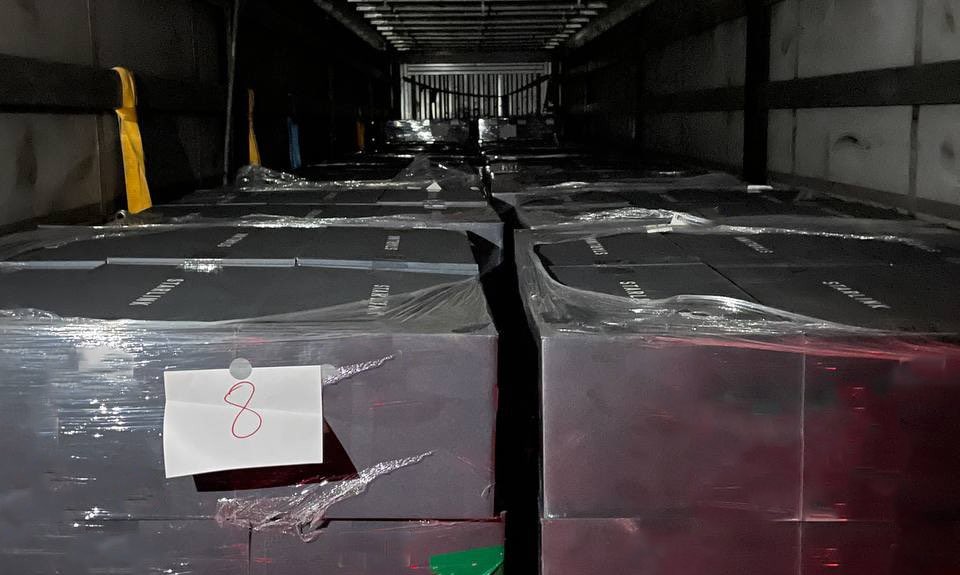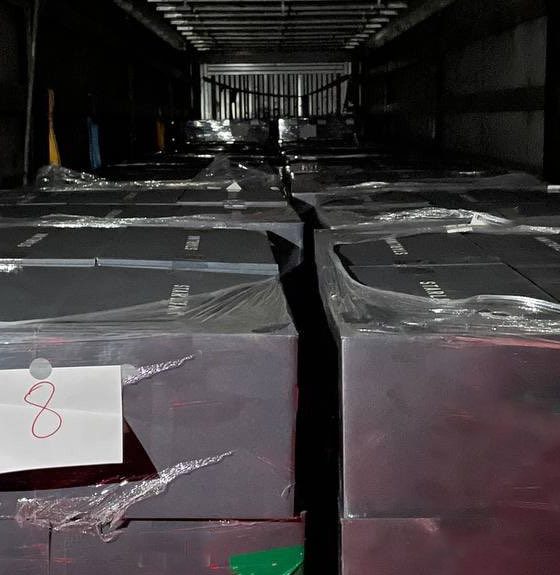

News
Elon Musk’s Starlink has thousands of active terminals in Ukraine, confirms minister
Defense and space industry experts may have reservations about whether Starlink is useful in Ukraine as the country fights back against the Russian invasion, but Minister of Digital Transformation Mykhailo Fedorov believes in satellite internet service’s effectiveness. In a recent interview, Fedorov noted that Starlink terminals have been “very effective” in helping his country stay connected to the World Wide Web.
The minister mentioned that Ukrainians utilize thousands of Starlink terminals each day, and more are coming. Musk stayed true to his words on Twitter and sent more Starlink kits to the country. Fedorov stated that new shipments of the satellite internet systems have been arriving every other day. The minister also noted that Starlink’s internet connection has been excellent so far.
“The quality of the link is excellent. We are using thousands, in the area of thousands, of terminals with new shipments arriving every other day,” Fedorov told The Washington Post during an interview, which was done using a Starlink connection from an undisclosed location.
Starlink’s growth in Ukraine has been substantial, with the satellite internet service’s mobile app being the most downloaded application in the country earlier this month. An individual familiar with the matter — who opted to remain anonymous due to the sensitive nature of the information — told the Post that there are over 5,000 Starlink terminals in Ukraine.
Fedorov’s agency aims to ship Starlink terminals to areas in Ukraine where internet access has effectively been cut off. The minister also noted that Starlink is used to connect people when cellular networks are overloaded. Needless to say, Starlink seems to be working well in Ukraine, and the country seems to support the technology.
Still, defense and space industry experts expressed concerns about using Starlink terminals during the war. They worry that Starlink’s signals might be used to detect the location of antennas. Experts have warned that Starlink terminals could lead Russian forces straight to the Ukrainians.
Experts further argue that since Starlink is still new technology, there is still a lot to figure out about the system’s use and if it’s wise to use it in conflict zones. Brian Weeden, director of program planning for space sustainability nonprofit Secure World Foundation, shared this sentiment. “The answer is it’s potentially useful, but there’s a lot we don’t know,” he said.
To play devil’s advocate, since the technology is new, the Russians may not know how to use it to their advantage either. According to Fedorov, the Russians have not used Starlink to locate Ukrainians. The minister noted Starlink terminals have typically been used in “densely populated areas where there would be a lot of civilians anyway.” “They currently appear to be very busy attacking the websites of our small towns and villages. I think they’re just not at that point yet,” Fedorov said.
Elon Musk, for his part, provided a quick comment to the Post. When asked by the publication for a comment about his Starlink efforts in Ukraine, the CEO just asked the publication to give his regards “to your puppet master Besos,” referring to Amazon founder Jeff Bezos.
Don’t hesitate to contact us with news tips. Just send a message to simon@teslarati.com to give us a heads up.

News
Tesla FSD fleet is nearing 7 billion total miles, including 2.5 billion city miles
As can be seen on Tesla’s official FSD webpage, vehicles equipped with the system have now navigated over 6.99 billion miles.

Tesla’s Full Self-Driving (Supervised) fleet is closing in on almost 7 billion total miles driven, as per data posted by the company on its official FSD webpage.
These figures hint at the massive scale of data fueling Tesla’s rapid FSD improvements, which have been quite notable as of late.
FSD mileage milestones
As can be seen on Tesla’s official FSD webpage, vehicles equipped with the system have now navigated over 6.99 billion miles. Tesla owner and avid FSD tester Whole Mars Catalog also shared a screenshot indicating that from the nearly 7 billion miles traveled by the FSD fleet, more than 2.5 billion miles were driven inside cities.
City miles are particularly valuable for complex urban scenarios like unprotected turns, pedestrian interactions, and traffic lights. This is also the difference-maker for FSD, as only complex solutions, such as Waymo’s self-driving taxis, operate similarly on inner-city streets. And even then, incidents such as the San Francisco blackouts have proven challenging for sensor-rich vehicles like Waymos.
Tesla’s data edge
Tesla has a number of advantages in the autonomous vehicle sector, one of which is the size of its fleet and the number of vehicles training FSD on real-world roads. Tesla’s nearly 7 billion FSD miles then allow the company to roll out updates that make its vehicles behave like they are being driven by experienced drivers, even if they are operating on their own.
So notable are Tesla’s improvements to FSD that NVIDIA Director of Robotics Jim Fan, after experiencing FSD v14, noted that the system is the first AI that passes what he described as a “Physical Turing Test.”
“Despite knowing exactly how robot learning works, I still find it magical watching the steering wheel turn by itself. First it feels surreal, next it becomes routine. Then, like the smartphone, taking it away actively hurts. This is how humanity gets rewired and glued to god-like technologies,” Fan wrote in a post on X.
News
Tesla starts showing how FSD will change lives in Europe
Local officials tested the system on narrow country roads and were impressed by FSD’s smooth, human-like driving, with some calling the service a game-changer for everyday life in areas that are far from urban centers.

Tesla has launched Europe’s first public shuttle service using Full Self-Driving (Supervised) in the rural Eifelkreis Bitburg-Prüm region of Germany, demonstrating how the technology can restore independence and mobility for people who struggle with limited transport options.
Local officials tested the system on narrow country roads and were impressed by FSD’s smooth, human-like driving, with some calling the service a game-changer for everyday life in areas that are far from urban centers.
Officials see real impact on rural residents
Arzfeld Mayor Johannes Kuhl and District Administrator Andreas Kruppert personally tested the Tesla shuttle service. This allowed them to see just how well FSD navigated winding lanes and rural roads confidently. Kruppert said, “Autonomous driving sounds like science fiction to many, but we simply see here that it works totally well in rural regions too.” Kuhl, for his part, also noted that FSD “feels like a very experienced driver.”
The pilot complements the area’s “Citizen Bus” program, which provides on-demand rides for elderly residents who can no longer drive themselves. Tesla Europe shared a video of a demonstration of the service, highlighting how FSD gives people their freedom back, even in places where public transport is not as prevalent.
What the Ministry for Economic Affairs and Transport says
Rhineland-Palatinate’s Minister Daniela Schmitt supported the project, praising the collaboration that made this “first of its kind in Europe” possible. As per the ministry, the rural rollout for the service shows FSD’s potential beyond major cities, and it delivers tangible benefits like grocery runs, doctor visits, and social connections for isolated residents.
“Reliable and flexible mobility is especially vital in rural areas. With the launch of a shuttle service using self-driving vehicles (FSD supervised) by Tesla in the Eifelkreis Bitburg-Prüm, an innovative pilot project is now getting underway that complements local community bus services. It is the first project of its kind in Europe.
“The result is a real gain for rural mobility: greater accessibility, more flexibility and tangible benefits for everyday life. A strong signal for innovation, cooperation and future-oriented mobility beyond urban centers,” the ministry wrote in a LinkedIn post.
News
Tesla China quietly posts Robotaxi-related job listing
Tesla China is currently seeking a Low Voltage Electrical Engineer to work on circuit board design for the company’s autonomous vehicles.

Tesla has posted a new job listing in Shanghai explicitly tied to its Robotaxi program, fueling speculation that the company is preparing to launch its dedicated autonomous ride-hailing service in China.
As noted in the listing, Tesla China is currently seeking a Low Voltage Electrical Engineer to work on circuit board design for the company’s autonomous vehicles.
Robotaxi-specific role
The listing, which was shared on social media platform X by industry watcher @tslaming, suggested that Tesla China is looking to fill the role urgently. The job listing itself specifically mentions that the person hired for the role will be working on the Low Voltage Hardware team, which would design the circuit boards that would serve as the nervous system of the Robotaxi.
Key tasks for the role, as indicated in the job listing, include collaboration with PCB layout, firmware, mechanical, program management, and validation teams, among other responsibilities. The role is based in Shanghai.
China Robotaxi launch
China represents a massive potential market for robotaxis, with its dense urban centers and supportive policies in select cities. Tesla has limited permission to roll out FSD in the country, though despite this, its vehicles have been hailed as among the best in the market when it comes to autonomous features. So far, at least, it appears that China supports Tesla’s FSD and Robotaxi rollout.
This was hinted at in November, when Tesla brought the Cybercab to the 8th China International Import Expo (CIIE) in Shanghai, marking the first time that the autonomous two-seater was brought to the Asia-Pacific region. The vehicle, despite not having a release date in China, received a significant amount of interest among the event’s attendees.








